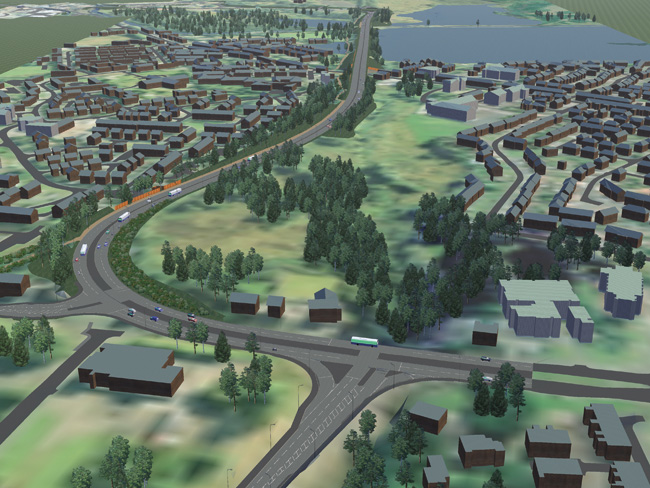Wigan Council needed a versatile civils package to enable its engineers to work easily in 3D. The council turned to Autodesk Civil 3D.
There was a time when a designer ± whether it be an architect creating a new housing estate or a civil engineer developing a new road scheme ± had to have a near-complete design in their head before they committed anything to the screen. The latest software, however, is far more intuitive, enabling users to put down their concept design as it comes into their head and adjust it as the ideas flow, automatically updating all supplementary views and documentation to correspond with their revisions.
Not only does this make the design process so much smoother, but it also enables users to experiment with different versions to optimise a design within the projectÝs parameters ± for instance, to make the most of the space available.
This is certainly a feature that Chris Wilson, assistant engineer in the environmental services department at Wigan Council, is finding very useful. He has only been using AutoCAD Civil 3D for around eighteen months, but already he is enjoying the benefits. For example, it is enabling him to help the councilÝs estates department get the best price for a brownfield site it is selling.
ýThis type of exercise just wouldnÝt have been possible using any of the other solutions the council uses. It would have taken far too long to be viable,¯ he says.
Fast and accurate
Wigan Council uses a variety of different design software solutions ± including AutoCAD, Bentley MX and Novapoint Virtual Map. However, Wilson was still on the lookout for a more versatile product that would enable him to design in 3D and would also be quick to use and to learn. His search led him to AutoCAD Civil 3D, AutodeskÝs AutoCAD-based design and drafting software for civil engineers.
He took to it straightaway, although he insists ýIÝm still relatively new to the product, but already IÝm seeing the advantages of Civil 3D.¯
These soon became clear when Wilson began working on a project for the councilÝs estates department. The department was selling a piece of disused council land for redevelopment. However, certain aspects of this land were causing complications and the whole project was far from straightforward.
The area was low lying and had no drainage system. As a result, only half the land could be used leaving one side free to soak away the water. The first task was to superimpose historical maps over plans to check for old abandoned mine workings ± a common occurrence in the Wigan area. Wilson was then asked to design an access road for the site as it was felt that this would help the council negotiate on the price.
However, recognising that flexibility would be key to selling the land, they didnÝt just want one road. They wanted a complete range of scenarios ± for example, different widths of carriageway, with one footpath, with two footpaths, streetlights, no streetlights and so on.
ýCivil 3D was ideal for this,¯ says Wilson. ýIts dynamic model greatly reduces the time it takes to evaluate multiple ideas. You begin by quickly laying out various alignment scenarios for a proposed road. Alignments, profiles and the makeup of the corridor assemblies can then be refined until the best design proposal has been developed. With each change, all related objects and drawings update automatically.¯
This feature also makes the calculation of cut and fill volumes simple, fast and highly accurate. When changes are made in the design, these are updated too. So not only is it far quicker to calculate these in the first place, data can be easily provided for every design option, so adding even extra value.
Consequently, Wilson was able to provide a complete range of options and costings, helping the council to make more informed decisions about the land and making it easier to sell.
Wilson foresees Civil 3D will also help with his visualisation work. ýI have been working on a 3D fly-through of a major link road which was designed in a real mix of AutoCAD, MX, and Novapoint Virtual Map with Civil 3D as a latecomer. However, I could see that it would work a lot better using Civil 3D by itself ± it would have saved a great deal of time.¯
He has also helped the planning department in their work for a public consultation on Wigan town centre. ýI have actually modelled some of the high-rise buildings on surfaces created using Civil 3D from the digital terrain model text data. This will enable the planners to give the public some idea of the dimensions of proposed buildings and how they fit their surroundings.
ýI can see this will come in very useful for any new road schemes under scrutiny in the future,¯ he says.
It is clear that Wilson thinks that he is only just scratching the surface of what Civil 3D can do for him. However, it is also apparent that the benefits are already making a difference. ýI predict that Wigan Council will soon be extending its use of Civil 3D,¯ he concludes.






